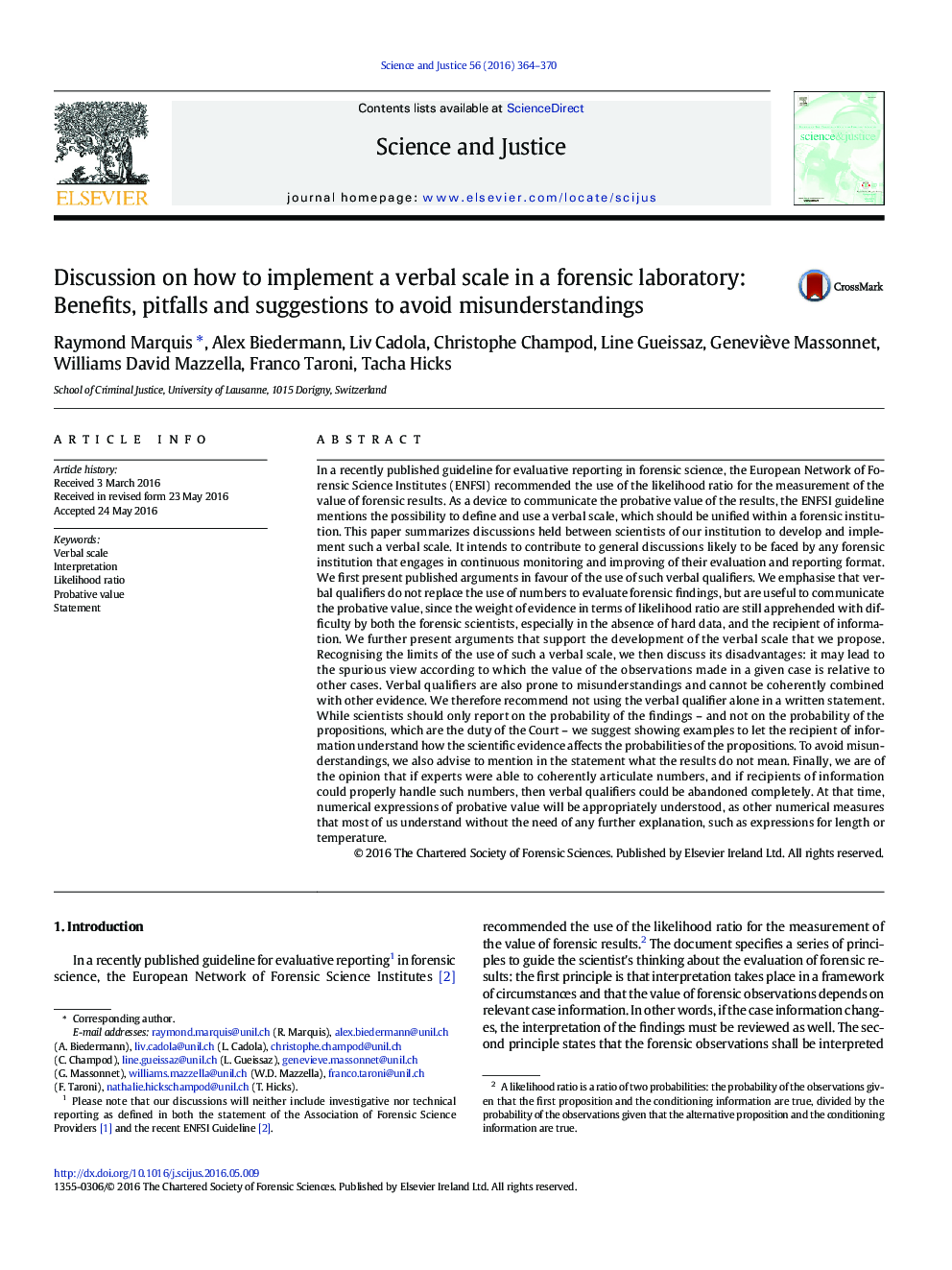| کد مقاله | کد نشریه | سال انتشار | مقاله انگلیسی | نسخه تمام متن |
|---|---|---|---|---|
| 4761349 | 1362096 | 2016 | 7 صفحه PDF | دانلود رایگان |
- In an institution, there should only be one verbal scale in use.
- Verbal qualifiers are not a replacement for the likelihood ratio, but a complement.
- Examples of how one can verbalise likelihood ratios are given.
- Giving the full scale in our statements might convey the wrong message.
- Education is needed so that the notion of likelihood ratios is fully understood.
In a recently published guideline for evaluative reporting in forensic science, the European Network of Forensic Science Institutes (ENFSI) recommended the use of the likelihood ratio for the measurement of the value of forensic results. As a device to communicate the probative value of the results, the ENFSI guideline mentions the possibility to define and use a verbal scale, which should be unified within a forensic institution. This paper summarizes discussions held between scientists of our institution to develop and implement such a verbal scale. It intends to contribute to general discussions likely to be faced by any forensic institution that engages in continuous monitoring and improving of their evaluation and reporting format. We first present published arguments in favour of the use of such verbal qualifiers. We emphasise that verbal qualifiers do not replace the use of numbers to evaluate forensic findings, but are useful to communicate the probative value, since the weight of evidence in terms of likelihood ratio are still apprehended with difficulty by both the forensic scientists, especially in the absence of hard data, and the recipient of information. We further present arguments that support the development of the verbal scale that we propose. Recognising the limits of the use of such a verbal scale, we then discuss its disadvantages: it may lead to the spurious view according to which the value of the observations made in a given case is relative to other cases. Verbal qualifiers are also prone to misunderstandings and cannot be coherently combined with other evidence. We therefore recommend not using the verbal qualifier alone in a written statement. While scientists should only report on the probability of the findings - and not on the probability of the propositions, which are the duty of the Court - we suggest showing examples to let the recipient of information understand how the scientific evidence affects the probabilities of the propositions. To avoid misunderstandings, we also advise to mention in the statement what the results do not mean. Finally, we are of the opinion that if experts were able to coherently articulate numbers, and if recipients of information could properly handle such numbers, then verbal qualifiers could be abandoned completely. At that time, numerical expressions of probative value will be appropriately understood, as other numerical measures that most of us understand without the need of any further explanation, such as expressions for length or temperature.
Journal: Science & Justice - Volume 56, Issue 5, September 2016, Pages 364-370
